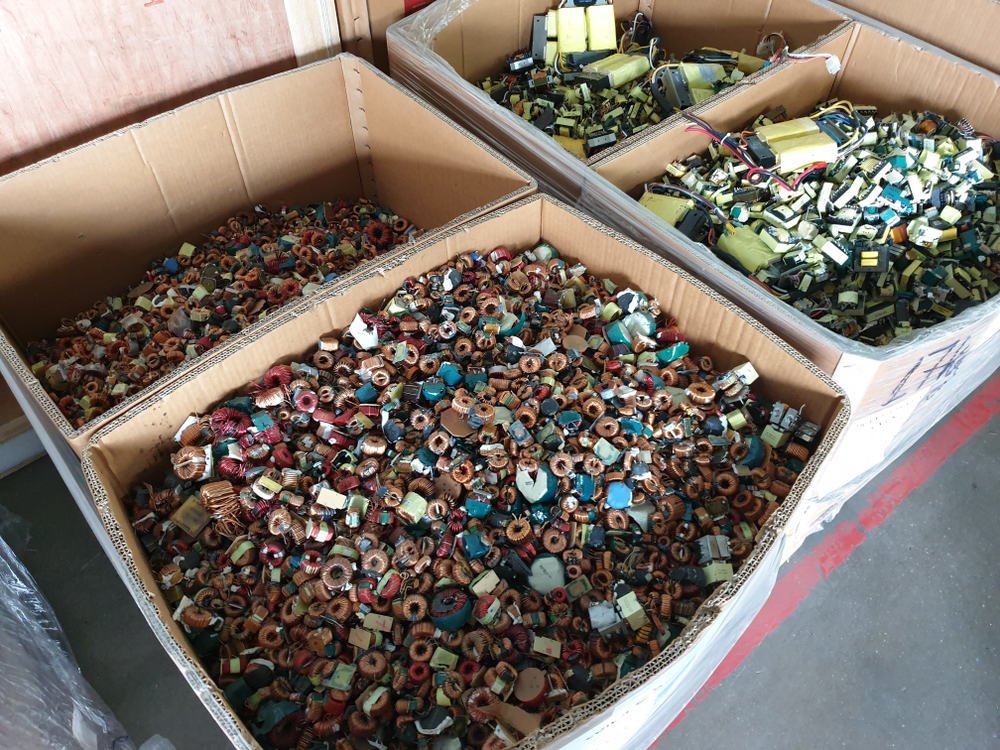The crushed sample, which is the focus of this study, is a jumble of small pieces of covering resin and copper metal that cannot be separated by physical means. Copper recycling method works on the principle of dissolving only the copper metal in a solvent, removing the remaining resin, and then recovering the copper.
Copper metal is dissolved chemically and then recovered by electrodeposition, which is referred to as “electrowinning.” In the electrochemical method, waste liquid is a significant issue. To deal with this, a closed system with minimal waste liquid was designed.
An oxygen-generating reaction by electrolysis of water occurs at the anode in electrowinning in an aqueous solvent, which consumes a significant amount of electricity. As a result, a reaction with the lowest cost of electric power is used.
Resin removal process
The resin was covered as a powder in a copper solution, which was removed by passing it through a general-purpose filter.
The process of electrowinning and liquid regeneration
The resin-free solution was poured into a vessel consisting of two sections separated by a diaphragm, such as an ion exchange membrane and the positive and negative electrodes were immersed in each section.
According to the electroplating principle, copper metal was deposited on the negative electrode, the cathode, when the electrodes were connected to a power source. Oxidation of iron ions from divalent to trivalent occurred at the positive electrode, the anode, regenerating the solution and allowing it to dissolve copper once again.
Recovery of purified Copper
The purity of the recovered copper was measured because high quality copper is required as a raw material for electrical wiring. Several mm thick copper was deposited on the foil by electrodes using copper foil with a thickness of 20 m as the starting material. The recovered copper was melted and formed into an ingot, which was then analysed using a quantometer. The amount of impure elements did not exceed a few ppm, indicating a purity of 99.99 percent or more. Oxygen could not be tested due to the limitations of the measurement method.
Repetition Stability
The iron ions must be repeatedly re-used to close the copper recovery system and generate little waste liquid which is the original concept of this technology.
The repeatability of this process was evaluated using a mini plant with 80 litres of liquid per electrode that was used in the element experiment, as well as the crushed sample.
Copper recycling performed a long-term test with 50 cycles using each of the two liquids as a cathode liquid and anode liquid alternately, assuming the series of procedures described in section 3 as a cycle. In one cycle, approximately 1 kg of copper was dissolved or recovered, and the cycle time was approximately 8 h.
Copper recycling performed a long-term test with 50 cycles, using each of the two liquids as a cathode liquid and anode liquid alternately, assuming the series of procedures described in section 3 as a cycle. In one cycle, approximately 1 kg of copper was dissolved or recovered and the cycle time was approximately 8 h. By specifying the volume of the solution and the areas of the electrodes, these parameters can be adjusted independently.
As a result, the operation mode can be used to design a full-scale facility. The behavior is consistent, indicating that the solution can be reused. The iron and copper in the solution did not need to be replenished, and almost no waste liquid was released during operation. The sulphuric acid component, which is an additive, has shown few signs of wear and needs to be replaced on a regular basis.
Conclusion
The entire article is based on copper recycling. If you want to know some new things about copper and copper recycling, hope it would prove beneficial for you.




